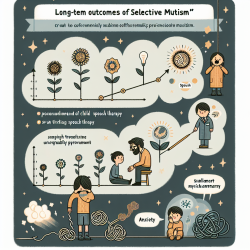Understanding Wilson Disease: Insights for Practitioners
Wilson Disease (WD) is a rare genetic disorder characterized by excessive copper accumulation in the body, primarily affecting the liver, brain, and other vital organs. This condition presents a complex array of symptoms, including hepatic, neurological, and psychiatric manifestations. A recent study titled "The patient experience of Wilson disease: a conceptual model based on qualitative research" offers valuable insights into the patient experience of WD, which can be instrumental for practitioners in improving patient care and outcomes.
Key Findings from the Research
The study involved a comprehensive approach, including a targeted literature review and interviews with clinicians, patients, and caregivers. The research identified 54 symptoms (22 hepatic, 19 neurological, 13 psychiatric) and 21 impacts that patients with WD experience. Notably, the study highlighted the existence of two distinct patient subgroups: those experiencing neurological, psychiatric, and hepatic symptoms, and those with predominantly hepatic and some psychiatric symptoms.
Implications for Practitioners
Understanding the diverse symptomatology and impacts of WD is crucial for practitioners. The study emphasizes the need for a multidisciplinary approach in managing WD, involving hepatologists, neurologists, and psychiatrists. Practitioners should focus on:
- Comprehensive Assessment: Regular and thorough assessments of hepatic, neurological, and psychiatric symptoms to tailor individualized treatment plans.
- Patient-Centric Communication: Engaging in open dialogues with patients to understand their specific experiences and concerns, thus enhancing patient satisfaction and adherence to treatment.
- Holistic Management: Considering the psychological and social impacts of WD, which are often as significant as the physical symptoms, in treatment planning.
Encouraging Further Research
The study underscores the complexity of WD and the need for further research to develop targeted therapies that address the specific needs of different patient subgroups. Practitioners are encouraged to contribute to ongoing research efforts and clinical trials, which are vital for advancing treatment options and improving patient outcomes.
Conclusion
The findings from this study provide a deeper understanding of the patient experience with Wilson Disease, highlighting the importance of a patient-centered approach in clinical practice. By integrating these insights into their practice, clinicians can enhance the quality of care and improve the lives of those affected by WD.
To read the original research paper, please follow this link: The patient experience of Wilson disease: a conceptual model based on qualitative research.










